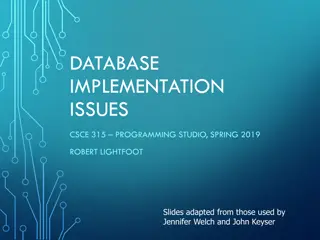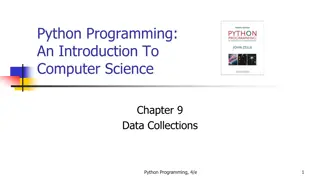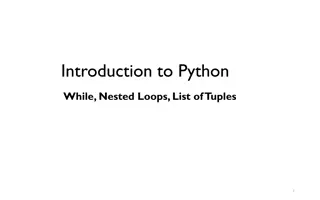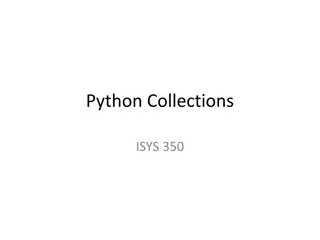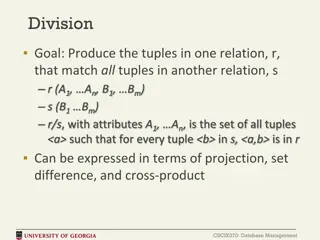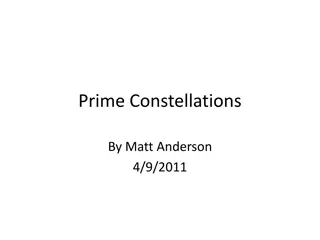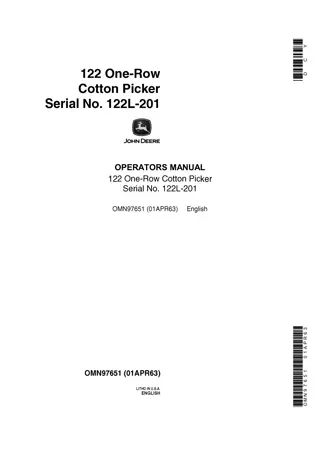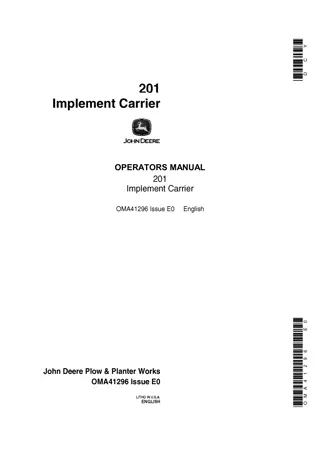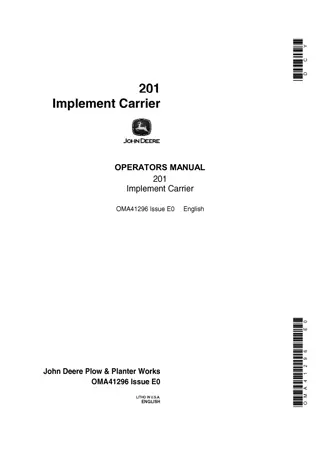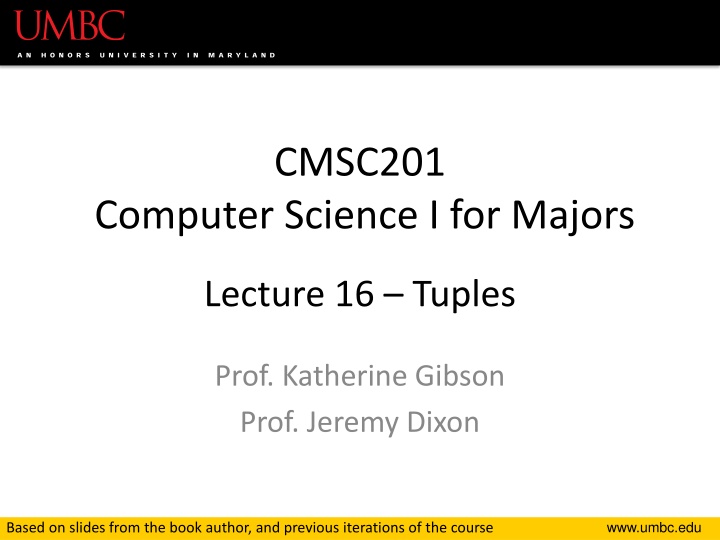
Understanding Tuples in Python
Delve into the concept of tuples in Python, an immutable sequence of values. Explore the creation, manipulation, and usage of tuples, including basic operations like creation, conversion, repetition, slicing, and traversing. Learn how to employ tuples effectively in functions as return values and grasp the essence of immutability in tuple elements. Enhance your Python programming skills by mastering this crucial data structure.
Download Presentation

Please find below an Image/Link to download the presentation.
The content on the website is provided AS IS for your information and personal use only. It may not be sold, licensed, or shared on other websites without obtaining consent from the author. If you encounter any issues during the download, it is possible that the publisher has removed the file from their server.
You are allowed to download the files provided on this website for personal or commercial use, subject to the condition that they are used lawfully. All files are the property of their respective owners.
The content on the website is provided AS IS for your information and personal use only. It may not be sold, licensed, or shared on other websites without obtaining consent from the author.
E N D
Presentation Transcript
CMSC201 Computer Science I for Majors Lecture 16 Tuples Prof. Katherine Gibson Prof. Jeremy Dixon www.umbc.edu Based on slides from the book author, and previous iterations of the course
Last Class We Covered Good code Code design Readability Adaptability Top-down design Modular development 2 www.umbc.edu
Any Questions from Last Time? www.umbc.edu
Todays Objectives Learn about the tuple data structure in Python Perform basic operations with tuples including: Creation Conversion Repetition Slicing Traversing Use tuples in functions (as return values) 4 www.umbc.edu
Tuples www.umbc.edu
The Tuple Data Structure In Python, a tuple is an immutable sequence of values What does immutable mean? Tuples are immutable which means you cannot update or change the values of tuple elements 6 www.umbc.edu http://www.ou.edu/memorylab/python/Lsn15_Tuples.ppt
The Tuple Data Structure Each value in the tuple is an element or item Elements can be any Python data type Tuples can mix data types Elements can be nested tuples year_born = ("Paris Hilton", 1981) tuple name first element: a string second element: an integer 7 www.umbc.edu
Creating Tuples www.umbc.edu
Creating Tuples The empty tuple is written as two parentheses containing nothing tup1 = () To cast a list as a tuple, you use tuple() myList = [5, 15, 23] myTuple = tuple(myList) print(type(myTuple)) <class 'tuple'> www.umbc.edu
Creating Tuples numbers = (1, 2, 3, 4) print (numbers) (1, 2, 3, 4) cheeses = ('swiss', 'cheddar', 'ricotta', 'gouda') print (cheeses) ('swiss', 'cheddar', 'ricotta', 'gouda') www.umbc.edu
Creating Tuples t1 = ('a') print (t1, type(t1)) a <class 'str'> Is this a tuple? t2 = ('a',) print (t2, type(t2)) ('a',) <class 'tuple'> Tuples with one element require a comma www.umbc.edu
Creating Tuples t3 = tuple('a') print (t3, type(t3)) ('a',) <class 'tuple'> empty = tuple() print (empty) () www.umbc.edu
Creating Tuples aList = [1, 2, 3, 4] aTuple = tuple(aList) print (aTuple) What does this output? (1, 2, 3, 4) aStr = 'parrot' aTuple2 = tuple(aStr) print (aTuple2) ('p', 'a', 'r', 'r', 'o', 't') www.umbc.edu
Indexing and Slicing Tuples www.umbc.edu
Tuple Indexing Just like other sequences (strings), elements within a tuple are indexed cheeses = ('swiss', 'cheddar', 'ricotta', 'gouda') print (cheeses[0]) What does this do? cheeses[0] = 'swiss' Tuples are immutable. Nothing! (an error) www.umbc.edu
Slicing a Tuple Like other sequences, tuples can be sliced Slicing a tuple creates a new tuple. It does not change the original tuple. cheeses = ('swiss', 'cheddar', 'ricotta', 'gouda') print (cheeses[1:4]) What does this output? ('cheddar', 'ricotta', 'gouda') www.umbc.edu
Tuple Operations www.umbc.edu
Operations on Tuples Tuples support all the standard sequence operations, including: Membership tests (using the in keyword) Comparison (element-wise) Iteration (e.g., in a for loop) Concatenation and repetition The len() function The min() andmax() functions www.umbc.edu
Membership Tests (in) In Python, the in keyword is used to test if a sequence (list, tuple, string etc.) contains a value. Returns True or False What does this output? a = [1, 2, 3, 4, 5] print(5 in a) print(10 in a) True False www.umbc.edu
Comparison In Python 3.3, we can use the comparison operator, ==, to do tuple comparison Returns True or False tuple1, tuple2 = (123, 'xyz'), (456, 'abc') tuple3 = (456, 'abc') print (tuple1==tuple2) print (tuple2==tuple3) What does this output? False True www.umbc.edu From: http://www.tutorialspoint.com/python/tuple_cmp.htm
Iteration teams = ((1, 'Ravens'),(2, 'Panthers'), (5, 'Eagles'),(7, 'Steelers')) Notice tuple of tuples for (index, name) in teams: print(index, name) What does this output? 1 Ravens 2 Panthers 5 Eagles 7 Steelers www.umbc.edu
Iteration t = [('a', 0), ('b', 1), ('c', 2)] for letter, number in t: print (number, letter) Notice list of tuples What does this output? 0 a 1 b 2 c www.umbc.edu
Concatenation (+) The + operator returns a new tuple that is a concatenation of two tuples a = (1, 2, 3) b = (4, 5, 6) c = a + b print (a, b, c) What does this output? (1, 2, 3) (4, 5, 6) (1, 2, 3, 4, 5, 6) www.umbc.edu
Repetition (*) The * operator returns a new tuple that repeats the tuple. a = (1, 2, 3) b = (4, 5, 6) print (a*2, b) What does this output? (1, 2, 3, 1, 2, 3) (4, 5, 6) www.umbc.edu
len()Functions The method len() returns the number of elements in the tuple. tuple0 = () print(len(tuple0)) tupleA = ("UMBC", "is", "the", "best") print(len(tupleA)) What does this output? 0 4 www.umbc.edu
min() and max() Functions max(tuple) Returns item from the tuple with max value min(tuple) Returns item from the tuple with min value What does this output? myTuple = tuple('parrot') print (myTuple) ('p', 'a', 'r', 'r', 'o', 't') a t print(min(myTuple)) print(max(myTuple)) www.umbc.edu
Tuples and Functions (return) www.umbc.edu
Tuples and functions Python functions (as is true of most languages) can only return one value But but we ve returned multiple values before! If multiple objects are packaged together into a tuple, then the function can return the objects as a single tuple Many Python functions return tuples www.umbc.edu
Example: min_max.py # Returns the smallest and largest # elements of a sequence as a tuple def min_max(t): return min(t), max(t) seq = [12, 98, 23, 74, 3, 54] print (min_max(seq)) What does this output? string = 'She turned me into a newt!' print (min_max(string)) myMin, myMax = min_max(string) (3, 98) (' ', 'w') www.umbc.edu
Passing Tuples as Parameters www.umbc.edu
Passing Tuples as Parameters A parameter name that begins with * gathers all the arguments into a tuple This allows functions to take a variable number of parameters So we can call the function with one, or two, or twenty parameters! (An actual parameter is also called an argument) www.umbc.edu From: https://docs.python.org/3.3/faq/programming.html#faq-argument-vs-parameter
Example def printall(*args): print (args) Actual Parameters (or Arguments) printall(1, 2.0, 'three') www.umbc.edu
Example: pointless.py def pointless(required, *args): print ('Required:', required) if args: print('Others: ', args) What does this output? pointless(1) pointless(1, 2) pointless(1, 2.0, 'three') pointless(1, 2.0, 'three', [4]) Required: 1 Required: 1 Others: (2,) Required: 1 Others: (2.0, 'three') Required: 1 Others: (2.0, 'three', [4]) www.umbc.edu
Any Other Questions? www.umbc.edu
Announcements Homework 7 is due Due by Monday (April 4th) at 8:59:59 PM Project 1 will come out Monday night Next time: Dictionaries 35 www.umbc.edu





